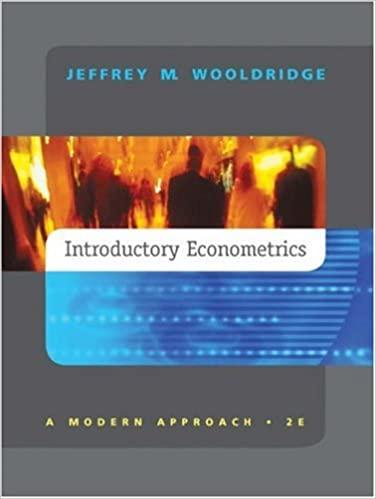Please Answer my Economics Questions, Thanks
1. Using the uncovered interest parity (UIP) model of exchange rate determination in the short run, analyze the following. Treat each question separately. A. Three-month interest rate is currently is 1.6% in Singapore and 5.0% in Indonesia. With yield on the Indonesian Rupiah (IDR) 3.4 percentage point higher than on the Singapore Dollar (SGD), shouldn't there be a massive movement of funds out of SGD into IDR? B. When the US Fed shifted to monetary policy tightening the currencies of many emerging markets came under depreciation pressure (e.g. Argentina, Brazil, India, Indonesia, Brazil, South Africa, Turkey). Central banks of these countries responded to depreciation pressure by raising domestic interest rate, despite signs of weakening domestic economy. Explain why. C. You are a US-based manufacturer with a significant share of your products exported to China. While your sales volume in China has been steady, the Chinese Yuan (CNY) has depreciated significantly against USD in the past year, depressing your revenue. How would you hedge the exchange risk over the next 12 months? What would be the cost of hedging? Assume that the current 1-year USD interest rate is 0.5% and 1-year CNY rate is 3.5%. D. You do not have any exposure to CNY, but you are an investor/speculator with the view that CNY has an upside (potential to appreciate) against USD because you believe that financial markets currently are overestimating the negative impact of COVID-19 on the Chinese economy. Should you \"bet\" on CNY and, if so, what would be the cost? Assume, as before, that the current 1-year USD interest rate is 0.5% and 1-year CNY rate is 3.5%. 2. Analyze the following issues relating to exchange rate adjustments in the short run and the Mundell-Fleming model. A. A country that fixes its exchange rate loses monetary policy independence. Explain. B. In late 2017, the Trump administration cut taxes and increased fiscal spending. What would the Mundell-Fleming model predict in terms US output, interest rate, and USD exchange rate? Can you think of any notable historical precedent of a similar policy combination? C. With a growing risk of recession due to COVID-19, among other things, the US Fed have accelerated monetary policy easing. What are the macroeconomic impacts on countries with a flexible exchange rate? D. In the 1930s, when the world was under a fixed exchange rate system (gold standard), how did economic contraction in one country impact others







